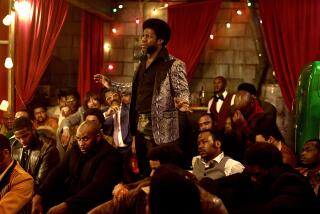Puerto Rico’s $330-Million Obsession: Cockfighting
- Share via
SAN JUAN, Puerto Rico — As his defeated rooster is carried from the arena and the shouts of triumph and frustration die down, Samuel Rodriguez peels $6,000 from a wad of bills and pays off his bets.
Then he settles back into his ringside seat to wait for the next feathered battle.
Up in the cheap seats, Jessy Hernandez savors the $8 she just won and prepares to risk her money again, and again and again, during the afternoon’s 35 fights.
However large the economic gulf separating the big-time breeder and the humbler spectator, the two are united by Puerto Rico’s passion for cockfighting.
“I love it!” screeches Hernandez, a 24-year-old who attended her first cockfight four years ago and has become a weekly devotee. “There is nothing like it,” says Rodriguez, one of the island’s biggest breeders, with 300 roosters in training.
Cockfighting is so widespread that enthusiasts feel no threat from animal rights activists, unlike counterparts in Oklahoma, Louisiana and New Mexico--the only three U. S. states where it remains legal.
Arenas in all three could be hurt by legislation pending in Congress to ban interstate transport of fighting cocks, which would prevent them from playing host to out-of-state breeders.
But the law would not apply to this U. S. territory in the Caribbean, where cockfighting is so popular it holds its own against horse racing and mass media sports.
“It would be a very sad government that tried to ban cockfighting. No Puerto Rican politician would dare!” says Carlos Gierbolini, head of the Department of Cocks, which regulates the sport on the island.
With $330 million a year in bets, the business provides tens of thousands of jobs while attracting hundreds of thousands of spectators to the 110 registered arenas, Gierbolini says. And that’s not counting those who frequent about 50 clandestine venues.
Cockfighting “was struggling a bit a few years ago, but it modernized and now it’s booming,” says Victor Ribera, a breeder.
He brushes off any suggestion that the sport is cruel, arguing that the roosters are genetically programmed to fight. “It is what they are born to do,” he says.
Ribera calls it “the last gentleman’s sport” because bets made with just a word, a look or a gesture are always honored.
He credits the current vigor of cockfighting to technological advances in the horn-shaped spurs taped to the roosters’ ankles--weapons that cut through the animals’ flesh as their legs flare in battle.
A few years ago, owners had to pay around $250 for spurs to be grown on each rooster. Now everyone uses cheap, effective plastic versions.
“Before, only the rich or the fanatical could afford to play their cocks,” Ribera says. “Now everybody can.”
Not that the influence of the wealthy can be ignored in cockfighting, which reputedly originated in the Himalayas, was imported to Europe’s royal courts and then exported to European colonies in the Americas.
Bejeweled aristocrats may no longer rank among its most prominent fans, but ostentation is still the theme.
“Cockers love gold,” says Jaime Medina, showing off a heavy chain and rooster medallion at the Isla Verde Coliseum, the biggest and best arena.
A stone’s throw from luxury hotels and casinos, Isla Verde is where gold-dripping Cuban Americans from Miami come to put their toughest birds to the toughest test.
Medina, who works for a breeder, says that even the best cocks last only seven or eight fights before they “meet their match.” In the past, competition was weaker and roosters could win 20 fights in a row.
“The race is getting purer,” Medina says of the Old English breed that is most popular in Puerto Rico’s arenas.
Medina lovingly describes the diet and training sessions to turn the birds into ever more efficient fighting machines. “It’s like training a boxer,” he says.
Nimbleness pays in the fight. Blood-spattered roosters dance, looking for advantage; then, neck feathers erect in fury, they fly at each other and gouge, sometimes fighting to the death.
Under Puerto Rican rules, a fight ends when a cock fails to get up or runs away. If both roosters are standing after 15 minutes, it’s a draw.
Daryl Shack, a curious tourist from Jacksonville, Fla., looks down from the top tier of the steep rows of seats encircling the fighting pit. The ring may be bloodstained and speckled with feathers, but the solid chairs and air-conditioning distinguish this from other arenas and the makeshift venues set up in back streets and mountain villages.
“Sure it’s cruel,” says Shack, but he’s clearly fascinated by the flurries of viciousness below. “I mean, I wouldn’t condone dogfights because we’ve adopted dogs into our culture, but we’re still eating chickens.”
The aroma of fried chicken wafts up from a vendor, and then the dueling begins again.
More to Read
Sign up for Essential California
The most important California stories and recommendations in your inbox every morning.
You may occasionally receive promotional content from the Los Angeles Times.










